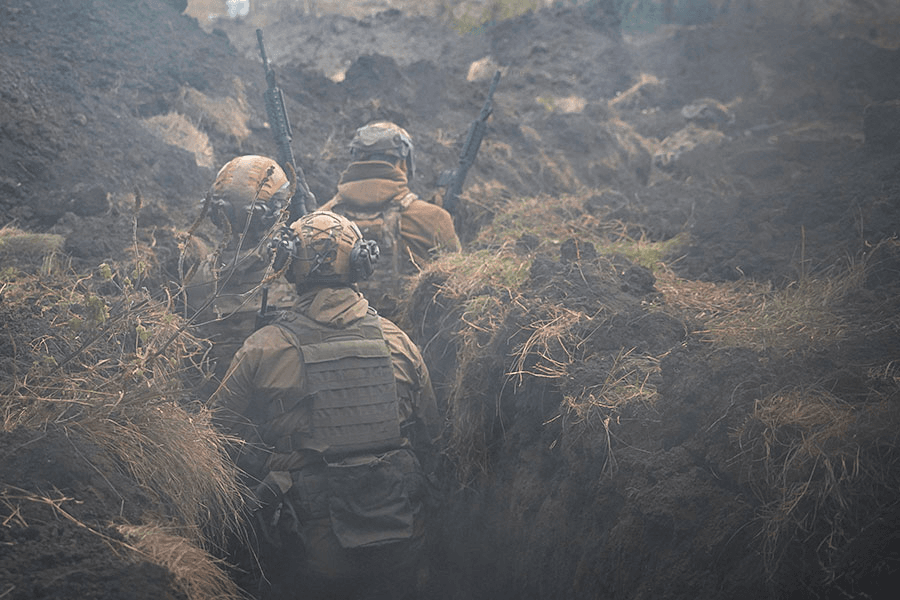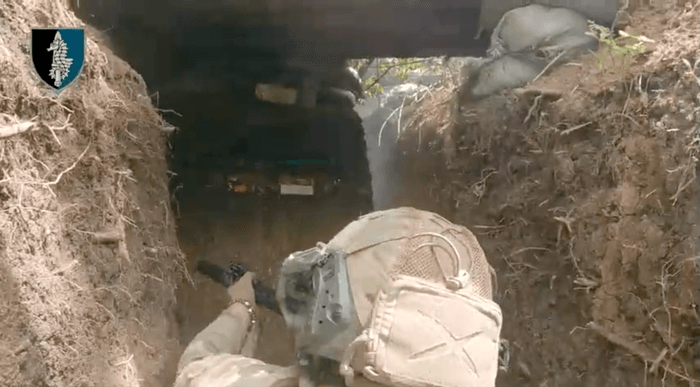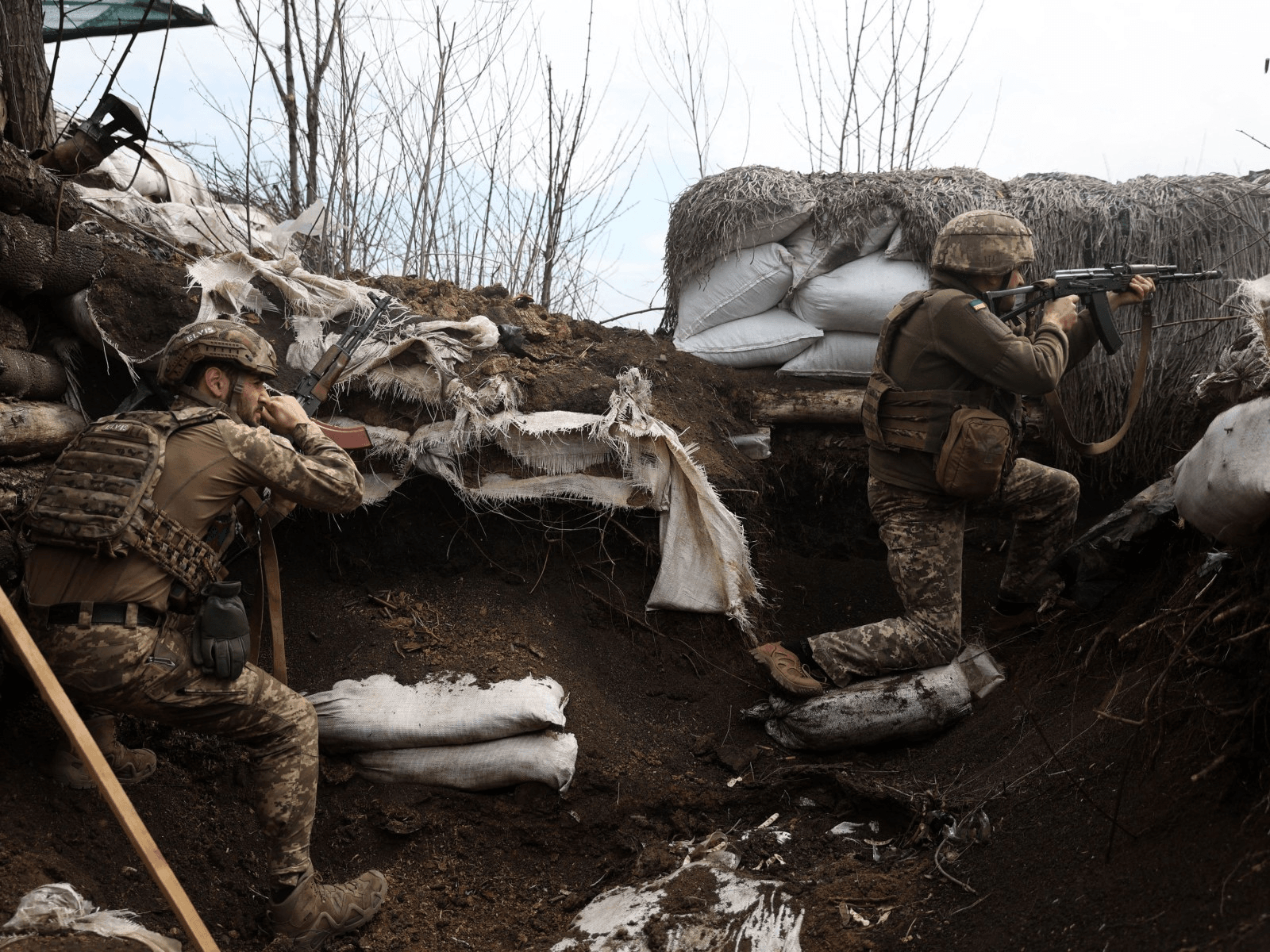Mastering Trench Assault: Techniques and Tactics
Assaulting Trench Systems
Trench warfare, a form of combat that became infamous during World War I, is still widely used today, specifically in the Ukraine conflict, and involves soldiers fighting from protective ditches. These trenches serve as both fortifications and the primary means of defense and offense on the battlefield. Understanding the fundamental principles of trench warfare is essential for mastering trench assault techniques.

Trenches are usually dug to connect fighting positions. They are typically dug in a zig-zag fashion to prevent attackers from firing down a long axis if they enter the trench and to reduce the effectiveness of high-explosive munitions. Trenches may also contain shallow turns, intersections with other trenches, firing ports, overhead cover, tunnel systems, and bunkers. Bunkers are usually oriented outside the trench, but may also have apertures allowing the ability to provide protective fires into the trench.
Trenches provide defenders with frontal cover, allowing them to relocate without the threat of the squad’s direct fire. However, without overhead cover, trenches are vulnerable to the effects of high-trajectory munitions like grenades, grenade launchers, and indirect fire weapon systems. These weapons systems should be employed to gain and maintain fire superiority over enemy defenders in the trench.
The confined nature of trenches, extensive preparations, and limited ability to integrate combined arms fires against them make clearing them hazardous for even the best-trained infantry. Although we always strive to avoid trenches whenever possible, we often cannot, and infantry units must frequently move in and clear them.
Entering the Trench Line
- The unit leader conducts leaders reconnaisance on the trench, identifying an entry point.
- The unit leader establishes the security element, as well as an internal base of fire (IBOF) or a support by fire (SBF) to suppress the trench line.
- The unit leader and the assault fire team move to the last covered and concealed position near the confirmed entry point.
- The unit leader shifts the base of fire away from the entry point.
- The base of fire continues to suppress the trench and adjacent enemy positions as required.
- Team 1 (the fire team leader and automatic rifleman) occupies a position short of the trench, adding suppressive fires for the initial entry.
- The unit leader and Team 2 (the grenadier and rifleman) move to the entry point. They move in rushes or by crawling; the unit leader takes positions from which they can best control the fire teams.
- Team 2 positions itself parallel to the edge of the trench and gets into a low position.
- On the unit leader’s command, Team 2 uses grenades (two seconds maximum), shouts “FRAG OUT”, and throws grenades into the trench.
- Upon both grenades detonating, they rush into the trench, assume a back-to-back stance, and engage all enemy personnel or suspected enemy positions.
- Both assaulters immediately move in opposite directions down the trench, continuing until they reach the first corner or intersection.
- Both assaulters take up positions to block any enemy movement toward the entry point.
- Simultaneously, Team 1 moves to and enters the trench, joining Team 2.
- The unit leader directs them to one of the secured corners or intersections to relieve the assaulter from Team 2, who then rejoins their team member at the opposite end of the foothold.
- At the same time, the unit leader enters the trench and secures the entry point.
- The unit leader remains at the entry point, marks it, and calls forward the next fire team to the trench.
- Once the unit has secured a foothold, the unit leader reports to the commander, “FOOTHOLD SECURE.” The commander follows the success of seizing the foothold with the remainder of the force.

Exploiting the Foothold
The commander or a designated subordinate must move into the trench as soon as possible to control the tempo, specifically the movement of the lead assault element and the movement of follow-on forces. Leaders must resist the temptation to move the entire unit into the trench. Follow-on forces should be committed as elements reach their objectives and reinforcements are required.
The assault element should maintain fire team organization to clear the trench (Assaulters should be designated number one, number two, number three, etc.). Each team is armed with at least one automatic rifle, and all Assaulters are armed with multiple hand grenades.
The positioning within the fire teams is rotational, so the Assaulters must be rehearsed in each position. The responsibilities for each position are as follows:
- The one man is responsible for assaulting down the trench using well-aimed, effective fire and throwing grenades around pivot points in the trench line or into weapon emplacements.
- The two man follows the number one man closely enough to support them, but not so closely that both would be suppressed if the enemy gained local fire
superiority. - The number three and four man follow the number two man and prepare to move forward when the positions rotate.
While the initial fire team may rotate by event, the squad leader directs the rotation of the fire teams within the squad as ammunition becomes low in the leading team, casualties occur, or as the situation dictates. Since this drill should be SOP, fire teams may be reconstituted as needed from the remaining members of the squad. The commander controls the rotation between squads using the same considerations as the squad leaders.

Clearing the Trench Line
The lead fire team of the initial assault squad moves out past the security of the support element and executes the trench clearing drill. The number one man (followed by the rest of the Assaulters in the fire team) maintains the advance until arriving at a pivot point, junction point, or weapon emplacement in the trench and conducts the following:
- The one man alerts the rest of the team by yelling out “POSITION” or “JUNCTION” and prepares a hand grenade.
- The number two man immediately moves forward near the number one man and provides covering fire until the grenade can be thrown around the corner of the pivot point.
- The number three and four man move forward to the point previously occupied by number two and prepare for commitment.
Anytime the number one man encounters a junction in the trench, the squad leader or a subordinate leader should move forward, make a quick estimate, and indicate the direction the fire team should continue to clear. This is generally toward the majority of the fortification or suspected command and control emplacements. A marker should be emplaced (typically specified in the unit SOP) pointing toward the direction of the cleared path. After employing a grenade, the number two man begins moving in the direction indicated and assumes the duties of the number one man. Anytime the number one man runs out of ammunition, they shout “RELOADING” and immediately move against the wall of the trench to allow the number two man to take up the fire. Squad leaders continue to push uncommitted fire teams forward, securing bypassed trenches and rotating fresh teams to the front. It is essential to note that trenches must be cleared in sequence, rather than simultaneously, to reduce the risk of fratricide and ensure that no enemy positions are bypassed.
Fire teams use variations of the combat formations to move. These formations are also used when clearing buildings. For these purposes, the terms "hallway" and "trench" may be used interchangeably.

Conclusion
In summary, understanding trench warfare is really important because it has shaped military conflicts in the past and is still relevant today. We saw its brutal effects during World War I, and now, in places like Ukraine, we can observe similar strategies in use. As we move forward, it’s clear that elements of trench warfare will continue to appear in conflicts, adapting to new technologies. By learning about this type of warfare, we can better understand the challenges of battle and how to more effectively counter them.